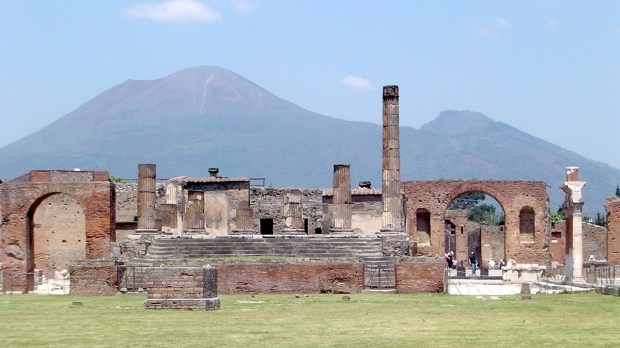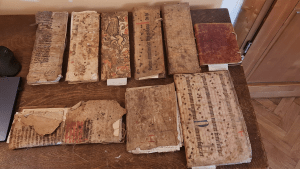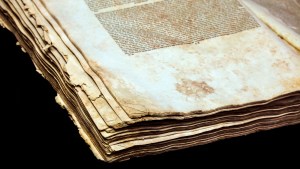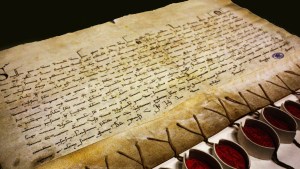Imagine deciphering text charred by a volcano 2,000 years ago. Until recently, it seemed impossible. But thanks to AI, a team of computer science students has unlocked secrets hidden within scrolls from Pompeii’s neighbor, Herculaneum. This breakthrough highlights the immense potential of AI in unlocking seemingly lost knowledge, thus enriching our understanding of history. The many different applications of this kind of technology to biblical studies and archaeology are about to begin.
An article published by The Economist explains that the Vesuvius Challenge (a machine learning and computer vision competition) offered $1 million to anyone who could use AI to decipher these scrolls. The winning team, led by Luke Farritor, successfully extracted four clear passages from a scroll nicknamed “Banana Boy,” because of its shape and size.
The heat from the volcanic eruption turned most scrolls kept in Pompeii and Herculanum into brittle charcoal logs – “all efforts to unroll them physically caused them to disintegrate,” The Economist explains.
“Unwrapping” them virtually marks a significant leap in deciphering these fragile artifacts, traditionally hampered by their fragile state, their carbon-based ink blending with the charred papyrus.
A window opens
AI tackled this challenge in two stages: segmentation (separating the papyrus layers) and ink detection (identifying text). The team’s winning approach involved training a neural network to recognize ink markings by feeding it manually labeled data.
The extracted text, believed to be a philosophical treatise on pleasure, opens a new window into ancient thought. This remarkable feat demonstrates AI’s power to push the boundaries of historical research and unveil knowledge hidden for millennia.
The eruption of Mount Vesuvius in 79 AD remains one of history’s most devastating natural disasters, burying the Roman cities of Pompeii and Herculaneum under a thick blanket of ash and pumice. For centuries, the secrets of these lost cities and their inhabitants lay dormant, preserved in a time capsule of volcanic debris.
The Vesuvius Challenge presented a unique opportunity to harness the power of AI to unlock these secrets, not just to decipher damaged scrolls, but potentially to offer insights into daily life, philosophical discourse, and the very fabric of a civilization frozen in time. This achievement stands as a testament to the power of collaboration between technology and humanities, offering a glimpse into the vast potential of AI for enriching our understanding of the past.




